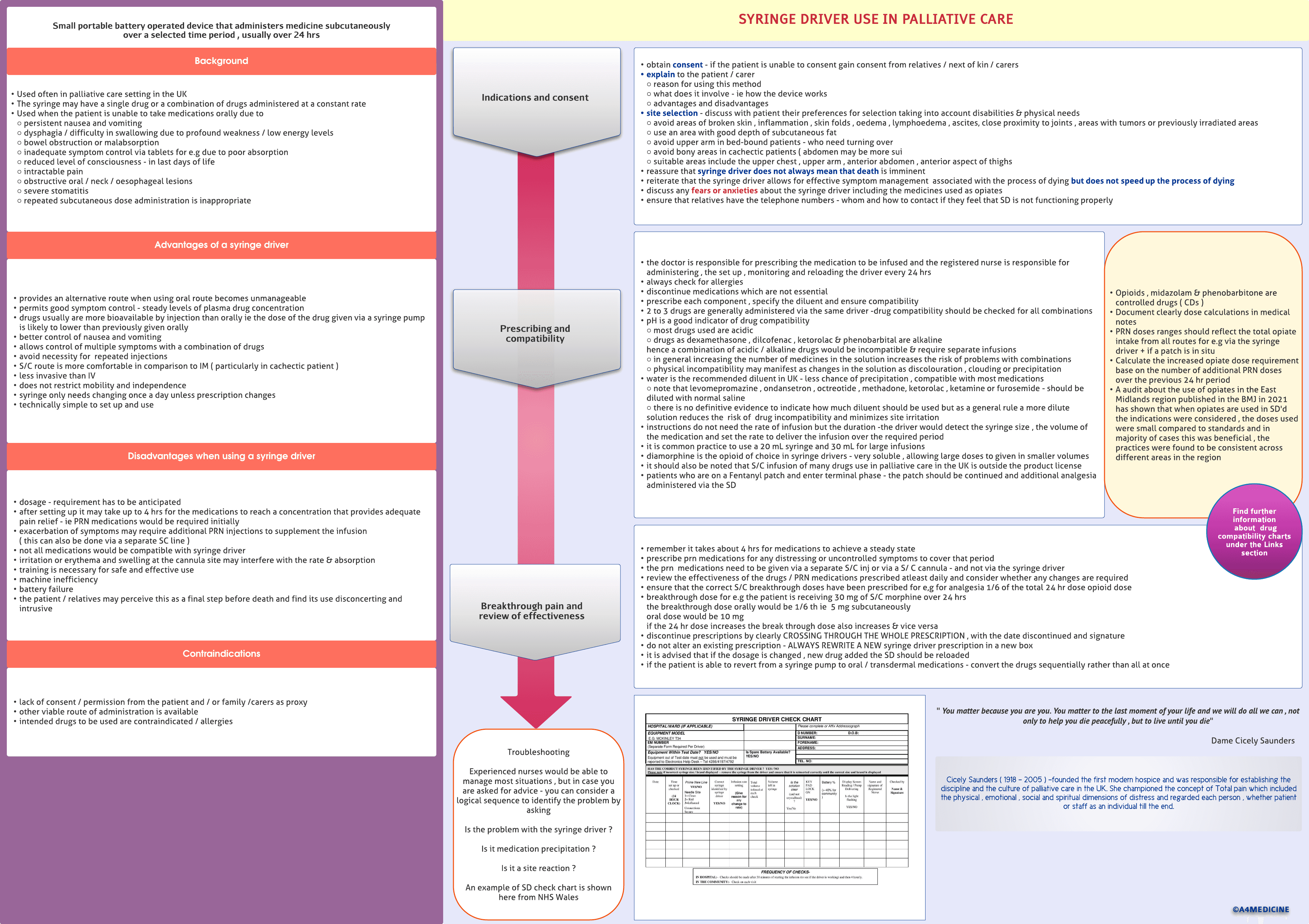Download A4Medicine Mobile App
Empower Your RCGP AKT Journey: Master the MCQs with Us!

Small portable battery operated device that administers medicine subcutaneously over a selected time period , usually over 24 hrs
Used often in palliative care The syringe may have a single drug or a combination of drugs administered at a constant rate Used when the patient is unable to take medications orally due to ○ persistent nausea and vomiting○ dysphagia / difficulty in swallowing due to profound weakness / low energy levels○ bowel obstruction or malabsorption○ inadequate symptom control via tablets for e.g due to poor absorption○ reduced level of consciousness - in last days of life○ intractable pain○ obstructive oral / neck / oesophageal lesions○ severe stomatitis ○ repeated subcutaneous dose administration is inappropriate
provides an alternative route when using oral route becomes unmanageable permits good symptom control - steady levels of plasma drug concentration drugs usually are more bioavailable by injection than orally ie the dose of the drug given via a syringe pump is likely to lower than previously given orally better control of nausea and vomiting allows control of multiple symptoms with a combination of drugs avoid necessity for repeated injections S/C route is more comfortable in comparison to IM ( particularly in cachectic patient ) less...
Try our Free Plan to get the full article.